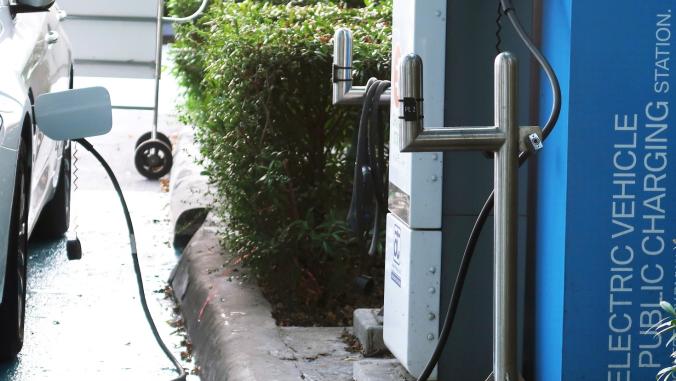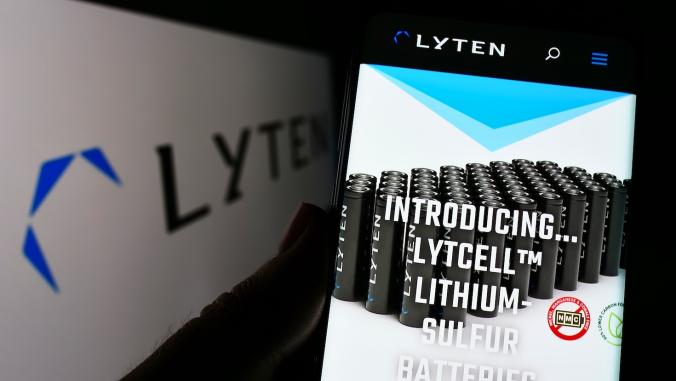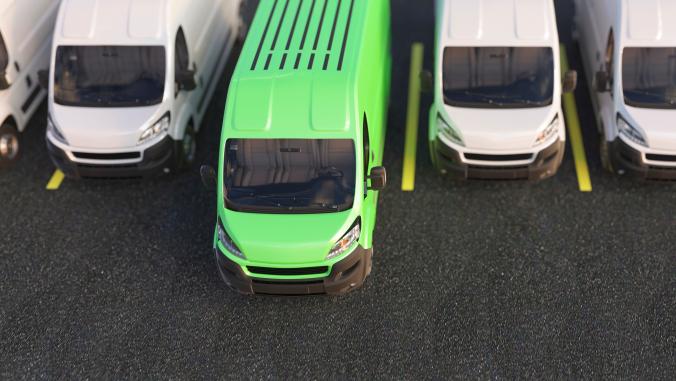Lessons from Hawaii's clean energy transformation for transportation
The islands have a lot of work to do to reach the ambitious goal of 100-percent-renewable transportation.

Shifting Hawaii’s transportation system to cleaner energy sources could prove a lot more difficult than converting its power grid to use solar and wind.
But the state’s electricity transformation could provide a variety of lessons for its planned evolution in transportation, say a group of leaders that gathered in Honolulu for the VERGE Hawaii conference this week.
After a decade-long concerted effort, Hawaii has managed to more than double the amount of electricity the state generates from clean power, boosting it from 9 percent in 2010 to around 25 percent this year, according to a recent report. That’s a major achievement and will help Hawaii reach its first-in-the-nation goal of powering 100 percent of the islands’ electricity needs with solar and wind by 2045.
But Hawaii also has a similarly audacious goal for 100 percent of its ground transportation to be powered by renewable fuel sources such as batteries, biofuels or renewable gas by 2045. That target likely will be much more complicated to make good on, and will require many more incentives and planning.
Early EV transition
On Wednesday, some of the largest vehicle fleet operators in Hawaii discussed the challenges they face when it comes to buying electric vehicles. Few upfront incentives are available to private fleet operators in Hawaii for purchasing battery-powered vehicles.
That means these fleet managers are mostly sticking with conventional diesel and gas-powered vehicles for moving people and goods.
Roberts Hawaii — which operates close to 900 vehicles including tour buses, hotel shuttles and school buses in Hawaii — is not yet purchasing electric vehicles for its fleet. However, it has a pilot project with the state of Hawaii and the Honolulu airport to test out vehicles that use batteries, natural gas and hydrogen fuel cells.
Why no EV buying yet? Quite simply, electric vehicles are more expensive than fossil fuel-powered vehicles.Every day, twice a day, our transportation system fails.
"There is no immediate driver that is pushing us toward converting our fleets to electric vehicles," said Pfund, adding that the private tour and bus operator market is extremely competitive. Plus, the electric vehicles that Roberts Hawaii would want to buy are at least 50 percent more expensive than what they’re currently purchasing.
Those battery costs are supposed to come down over the next few years. Bloomberg New Energy Finance predicts that the upfront costs of electric vehicles will be competitive on an unsubsidized basis starting in 2024.
Hawaiian Electric, the state’s largest electricity provider, has a fleet of 1,486 vehicles across all the islands that help workers with various tasks, such as fixing utility lines and maintaining remote transformers. While the power company accesses some public funds to help buy cleaner vehicles, it still has only converted 14 percent of its fleet to battery-powered, biodiesel-powered or natural gas-powered.
Roger Morton is the general manager of Oahu Transit Services, which operates Oahu’s bus service TheBus and its Handi-Van shuttle service. For him, purchasing and building the charging infrastructure for electric buses faces a variety of challenges. TheBus carries 200,000 passengers covering 100,000 miles a day, uses 6 million gallons of diesel fuel every year, and keeps a fleet of around 540 heavy-duty vehicles.
"We’re starting to look at different programs and plans to see how we can do this," he said. "That’s a very ambitious goal to try to go 100 percent renewable energy by 2035." The cities and counties of Honolulu, Maui and Kaua’i are trying to lead the way on the 2045 transportation goal and are hoping to convert their fleets by 2035.
Lessons from electricity
Oftentimes utilities are looked at as slow-moving dinosaurs that need to be pushed to deliver or be disrupted. But in Hawaii and California, the utilities have managed to deliver on some progressive goals.
Now some lessons learned from the clean-energy transition in Hawaii and California could be used for transportation.
Pfund of Roberts Hawaii proposes that Hawaii’s incentives for electric vehicles could mirror those that kick-started the rooftop solar movement there. "One of the success stories in Hawaii has been how the state has gotten a lot of rooftop PV systems in place. That was done primarily through a combination of federal and state tax credits," Pfund said.
"If we were able to move in that direction [tax credits for EVs], I think we would get a lot more early adopters. Our company would be interested in converting more vehicles if there were additional incentives as part of the process," said Pfund.Oftentimes utilities are looked at as slow-moving dinosaurs that need to be pushed to deliver or be disrupted.
Holmes Hummel, the founder of Clean Energy Works, advocates for financing clean transit by using a utility playbook. The batteries and chargers for an electric transit bus could be financed in the way that utilities have been financing energy storage on the customer side of the meter, she said.
And in that way, a transit agency could have immediate net savings from lowered diesel fuel use as well as a path to ownership of the vehicle. "What if we were able to knock down that first cost barrier," Hummel said.
Making Hawaii’s transportation system cleaner isn’t just about introducing electric vehicles. It’s also about lowering vehicle miles driven, and getting Hawaiians out of single-occupancy vehicles.
The Director of Transportation for the National Resources Defense Council, Amanda Eaken, pointed to the electricity industry’s tight control of supply and demand as a possible tool for making transportation cleaner. "In the case of energy we have something like 38 balancing authorities and their job is to balance supply and demand every day. It’s very fine-tuned so that we don’t have blackouts," said Eaken.
"In the transportation sector we lack that kind of entity," Eaken said. "Instead, every day, twice a day, our transportation system fails. That’s your commute traffic. There is far too much supply for the limited space that we have and we sit in this mind-numbing road congestion."While utilities and power companies aren’t often looked at as leaders, these sectors are now embracing clean energy.
One tool is congestion pricing, being tested in cities including Los Angeles, London and Stockholm. It's a supply-and-demand mechanism. You’d take a traffic zone and create a package of mobility options — such as buses, ride-hailing services, rail — and introduce a decongestion fee.
Those fees, from $2 to $4 a pop, can discourage driving during peak hours. In some cities, driving during peak congestion has dropped by 20 percent after the introduction of congestion pricing, Eaken said.
While utilities and power companies aren’t often looked at as leaders, these sectors are embracing clean energy in many regions. And the issues with transportation could learn a thing or two.
If you're interested in the clean transformation of transportation, the discussion will continue at VERGE 18 in Oakland in October.




